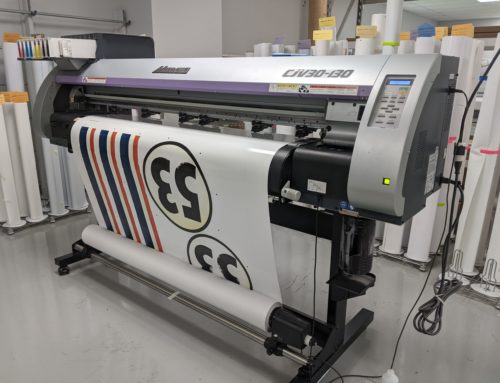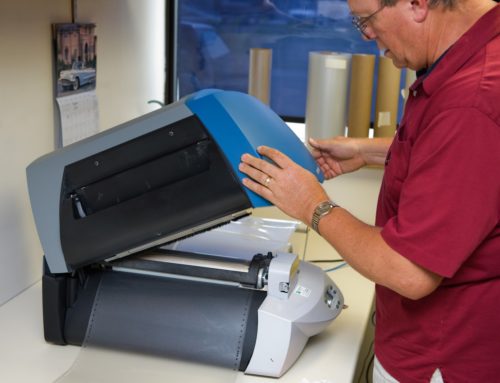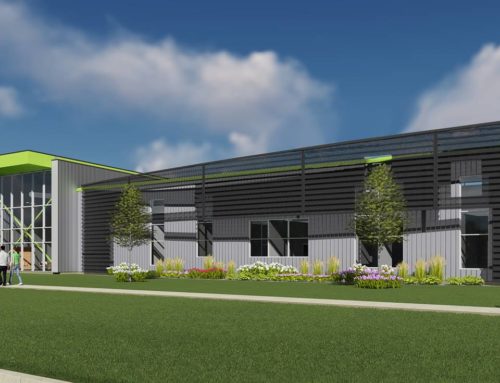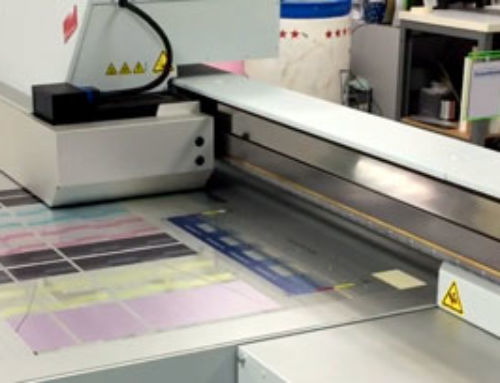Print-industry veterans know the phrases “first surface” and “second surface” well, but the meanings aren’t as clear as one might think: They refer to which side of the material an image is printed on. First surface printing occurs when ink is printed on top of the material, and second surface (or subsurface) printing occurs when ink is printed on the back of the material.

First Surface Printing
Traits:
- When looking at the image from the front, the ink is on top of the material.
- The image is right-reading, meaning it looks like the text in this blog. Consider a rubber stamp: The stamp itself is wrong-reading (backward), so when ink is applied and the rubber is pressed to paper, the image is right-reading.
- The base material may be opaque or clear.
- The adhesive will almost always be found on the back of the print.
- This provides a more traditional look for signs.
- If needed, UV and abrasion resistance can be added on top of the ink by adding a protective layer of lamination, clear ink, or polyurethane dome.
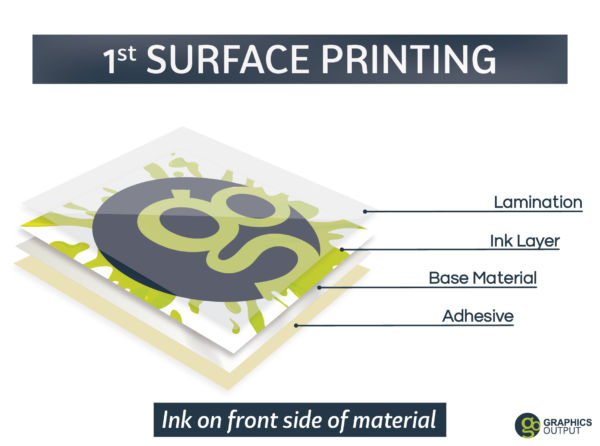
Items typically first surface printed include…
- Branding and logo decals.
- Warning labels.
- Hang tags and cards.
- Decals with opaque base materials, including specialty materials such as shiny chrome metalized polyester, carbon-fiber vinyl, and reflective vinyl.
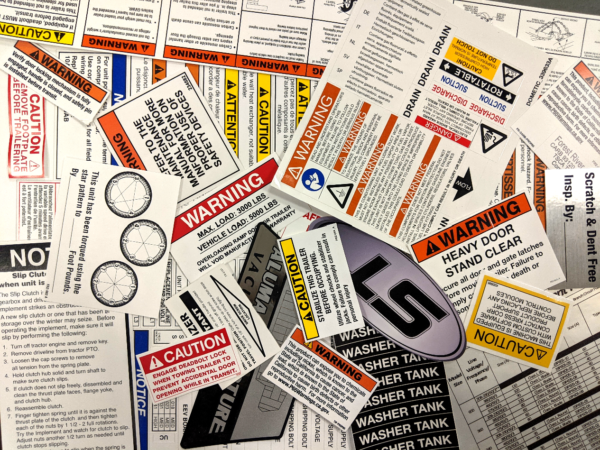
An array of first surface printed labels and decals.
Second Surface Printing
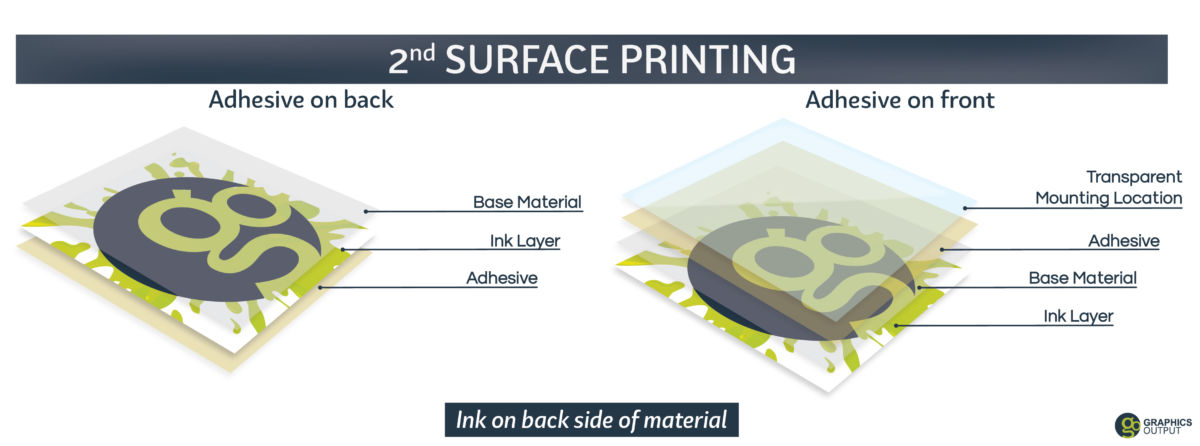
Traits:
- When looking at the image from the front, the ink is underneath the material.
- The image is printed as a mirror image (backward).
- It is also known as “subsurface printing”.
- The base material must be clear/transparent, otherwise, you wouldn’t see the final image.
- Adhesive may be found on either the front or back of the print, depending on the final application.
- Second-surface printing offers a more modern look for signs. Using thick, clear materials like transparent acrylic can be second surface printed for an interesting, high-end look.
- The amount of UV and abrasion resistance is determined by the layers of material and/or surfaces in between the ink and the viewer.

An image of clear acrylic that has been subsurface printed.
Items typically second surface printed include…
- Graphic overlays for control panels.
- Window decals that will be applied to the inside of the window but need to be viewed from the outside.
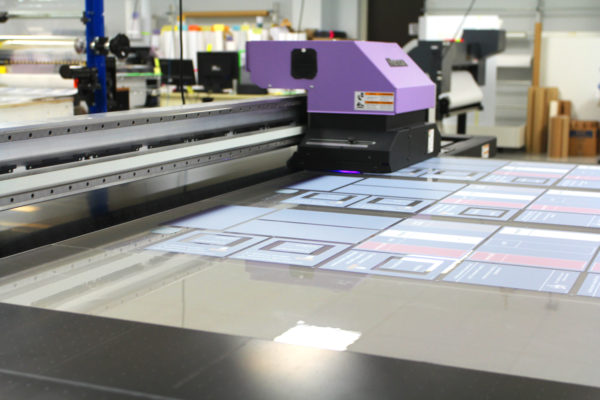
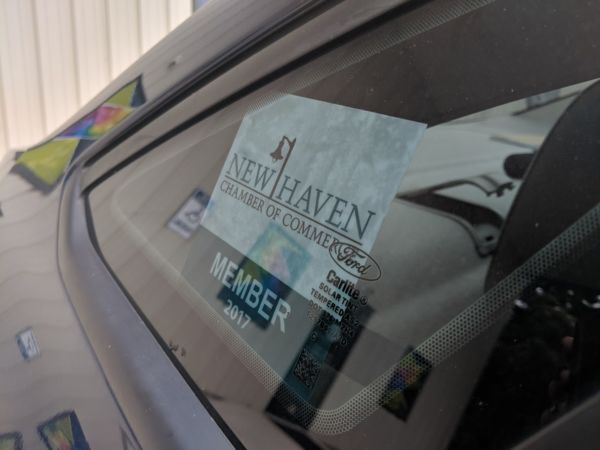
Left: A flatbed printer subsurface printing control panel overlays on clear polycarbonate material.
Right: A subsurface printed window cling applied to the inside of a car window.
1st surface printing occurs when ink is printed on top of the material, and 2nd surface printing, also known as subsurface printing, occurs when ink is printed on the back of the material.
At this point you should feel pretty confident in when to use each term, but when in doubt, remember this handy rhyme: “First surface, ink on top. Second surface, ink backdrop!” (And if you’re still confused after all that, just email us at sales@gographicsoutput.com and we’ll help you decide on the perfect printing method for your application.)

